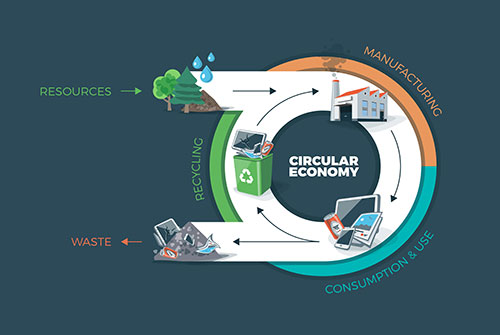A circular economy is an industrial system that is restorative or regenerative by intention and design. It replaces the end-of-life concept with restoration, shifts towards the use of renewable energy, eliminates the use of toxic chemicals, which impair reuse and return to the biosphere, and aims for the elimination of waste through the superior design of materials, products, systems, and business models.

The circular economy focuses on better use of natural resources, and the simple fact is that many of us consume far too much. During the 20th century, the world's use of raw materials grew at twice the rate of population growth. In a world where people in the richest countries consume 10 times as much as the poorest, there is a need for many of us to consume less and many others to consume more
This can mean choosing versions of products that have been produced in more sustainable ways or that can be recycled. It can also mean changing what we consume — for example by shifting to a plant-based diet, which offers emissions and other natural resource benefits over meat-heavy meals
Consumers can only do so much when the entire economy is built on the take-make-waste model. What we need is systemic change, so that sustainability doesn't only depend on consumer choices.
Coded by Mayra Rodriguez